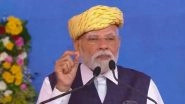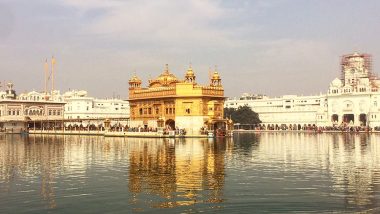Till 1966, Punjab had 63% Hindus and also a large number of Sikhs. Akali Dal started 'Punjabi Suba Movement' in 1950s demanding a separate state of Punjab on the basis of language. Diplomatically division was proposed on the linguistic basis rather than on the basis of religion. But Hindu leaders insisted on Hindi as mother language. Finally in 1966 the central government agreed to the demands of the Akalis and Punjab was divided into Punjab, Himachal Pradesh and Haryana according to the Punjab Reorganization Act 1966. Hindu majority areas speaking Pahari dialect of Punjabi became Himachal Pradesh and Haryanvi dialect of Hindi speaking population became Haryana, whereas Sikhs formed the majority of the population of present day Punjab.
This division laid the foundation of horror of 1984. After the internal partition of Punjab, religion became an important aspect of politics in the region. This gave birth to Jairnail Singh Bhindranwale ‘Head of Damdami taksal – a religious centre of Sikhs’. A state which earlier witnessed Green Revolution now had become Crimson, because of the bloodshed which took place during 1980s and continued till early 1990s.
But the division had some drawbacks. which led to the following problems:-
Firstly, some Gurmukhi Punjabi speaking areas were made part of Himachal Pradesh and Haryana. Like Una district formed part of Himachal Pradesh and in the same way Ambala district formed part of Haryana.
Secondly, Chandigarh was built in 1960 to serve as the capital of Punjab as earlier capital of undivided Punjab, Lahore, became part of Pakistan. As Chandigarh lies on the border of Punjab and newly formed Haryana, both the states wanted to include Chandigarh in their respective state. Central Government made Chandigarh, the Union Territory the serving capital for both the states.
Thirdly, there was water dispute between Punjab and Haryana over the division of water from the Ravi, Sutlej and Beas. In 1976 Punjab and Haryana got 3.5 Million Acre Feet (MAF) of water out of 15.2 MAF of water from Ravi, Sutlej and Beas. On April 1982, Ms Indira Gandhi broke the ground near Kapuri village of Patiala district to mark the beginning of construction of the Sutlej-Yamuna Link Canal. On the same day Shiromani Akali Dal (SAD) along with state unit of the CPI(M) launched a morcha against the Canal.
Language issue, Water dispute, Capital dispute and irregular division of Punjab led to the feeling of being cheated by Central government amongst Sikhs. Jarnail Singh Bhinderanwale emerged as the leader of the Sikh Community. Around 1980-81, Bhinderanwale became the voice for Sikhs.
Seeing his popularity, Bhinderanwale was used by the Congress against Akali Dal in SGPC elections in 1978. Giani Zail played a vital role in this. Later when Bhinderanwale became popular and powerful, he dumped Congress and turned hostile towards the central government. He questioned the central government about being irresponsible for Sikhs and later this struggle for ‘Rights’ turned violent.
The inability of Indira Gandhi to seek diplomatic solution of the concerns of Sikh Community led to ‘The Operation Blue Star’. On 15th December 1983, Bhinderanwale moved into Akal Takht, inside Golden Temple. Although head priest of Golden Temple opposed to this move, but Shiromani Gurdwara Prabandhak Committee (SGPC) Chief Gurcharan Singh Tohra supported Bhinderanwale.
Operation Blue Star Details:
Occupation of Akal Takht by Bhinderanwale set the stage for Operation Blue Star. Ex Major General of Indian Army Shabeg Singh became the follower of Bhinderanwale. He fortified entire Golden Temple. Proper communication was set between the ranks and food was stored from the last couple of months. The entire road up to Jallianwala Bagh was under the reach of the Sikh Extremists.
Lt. General Sinha was not in favour of sending army inside the Golden Temple. On 25th April 1983 Punjab Police DIG A.S. Atwal was killed at the gates of Golden of the Golden Temple when he was coming out of the temple after attending the prayers. The government did not detain Bhinderanwale when was then living in Guru Nanak Niwas. The then Punjab chief minister Darbara Singh was dismissed after the massacre of Hindu Bus passengers on October 5. President rule was established in the state.
Gandhi tried to solve the matter diplomatically with Akali Dal, but in vain. Harcharan Singh Longowal did not agree to the demands less than those mentioned in Shri Anandpur Sahib Resolution. Longowal declared an agitation to stop the movement of grain with the state on June 3 and the same day was the martyrdom day of Fifth Guru of Sikhs Sri Guru Arjan Dev Ji. That was the final blow to the diplomatic attempts of the Indira Gandhi in solving the Punjab Issue.
The then prime minister finally decided to bring in army to control the situation. So a decision was taken and on 1st June the then Major General Kuldeep Singh Brar , who was later promoted to the rank of Lt. General and was called to the headquarters of Western Command. He was made to command the mission which was named ‘Operation Blue Star’.
There was always a risk that Pakistan would come into the picture for taking advantage of the situation. Another operation named ‘Wood Rose’ was carried out for sealing entire border with Pakistan. Lt. General Brar immediately moved to Amritsar. He started planning the attack. First of all the entire area, surrounding the Temple was cordoned off along with CRPF. Lt. General Sundarji was reviewing the entire operation, whereas Lt. General R.S. Dyal was made security adviser to the governor of Punjab. Lt. Gen. Brar collected the information about the weapons and the fortification of the temple. Lt. Gen. Brar in his book ‘Operation Blue Star: The True Story’ denied the allegation levelled by various journalists and the authors who wrote books on Operation Blue Star that Army was trained in the foothills of Himalayas with the dummy model of Golden Temple months prior to the attack. Curfew was imposed in Amritsar on 2nd June. It was clear that the extremists had occupied the houses and hotels surrounding the temple for overseeing any movement of the security forces.
On 2nd June at 9:15 PM, Mrs. Gandhi appealed to Akali Dal to resolve the crisis through talks. In her broadcast on Doordarshan she gave no clue about the army action on Golden Temple. The actual Operation started on 5th June 1984. As 3rd June was the martyrdom day of the sixth Guru, so the large number of pilgrims visited the temple. Announcements were made on loudspeakers by the army to evacuate the temple, but nearly 200 pilgrims came out. Press was completely banned in Punjab. Journalists were ordered by the army to leave Punjab. There was a complete blackout in the state. Time factor was crucial, because if the Sikhs residing in the villages came to know about the army action then within a day army could have been surrounded by them. The Operation commenced around 10:30PM on June 5 after Gurcharan Singh Tohra failed to convince Bhinderanwale to surrender.
The operation was divided into two parts. One was to be carried out in the main temple whereas the second one was to be carried in the guest houses in the extreme proximity of Golden Temple. These guest houses were maintained by SGPC. Army entered Golden Temple around 10:30 PM. As soon as the soldiers entered the temple from Clock Tower entrance, they came under a huge shower of bullets. The extremists were firing from the holes which they had created in the stairs. Six army companies were used by Lt General Brar. The extremists had a massive fire power. They even used anti-Tank rocket launcher, which they fired on the APC of Para commandoes when they were advancing towards Akal Takht. When there were heavy casualties of the troops, the then Lt. General Brar asked for tanks, and he got the approval. Initially secondary weapon i.e. 7.62 MM gun of tanks were used to neutralize the heavy firing coming from Akal Takht. As time was crucial, the tanks finally used their main weapon i.e. 108 MM gun, this gun destroyed the Akal Takht. It is believed that Bhinderanwale and Shabeg Singh were killed only after the tanks were used.
According to Lt. Gen Brar, there were strict orders to the troops from the high command that under any circumstances no bullets should be fired towards the main temple. Lt. Gen. Brar in his book mentioned that the entire floor of the Takht was covered with a layer of about nine inches of metal (fired bullet cases) and it was still simmering.
Army recovered bodies of Bhinderanwale and Shabeg Singh on June 6, 1984. By June 7, Operation Blue Star was declared a success. It was believed that arms and ammunition were smuggled inside the temple from Pakistan.
After Operation Blue Star, Sikhs felt more alienated in their own country. The series of terror attacks did not stop in Punjab. It led to an era of terrorism in Punjab. On October 31, 1984, Indira Gandhi was killed by her Sikh body guards.
(The above story first appeared on LatestLY on Jun 06, 2018 10:56 AM IST. For more news and updates on politics, world, sports, entertainment and lifestyle, log on to our website latestly.com).













 Quickly
Quickly












